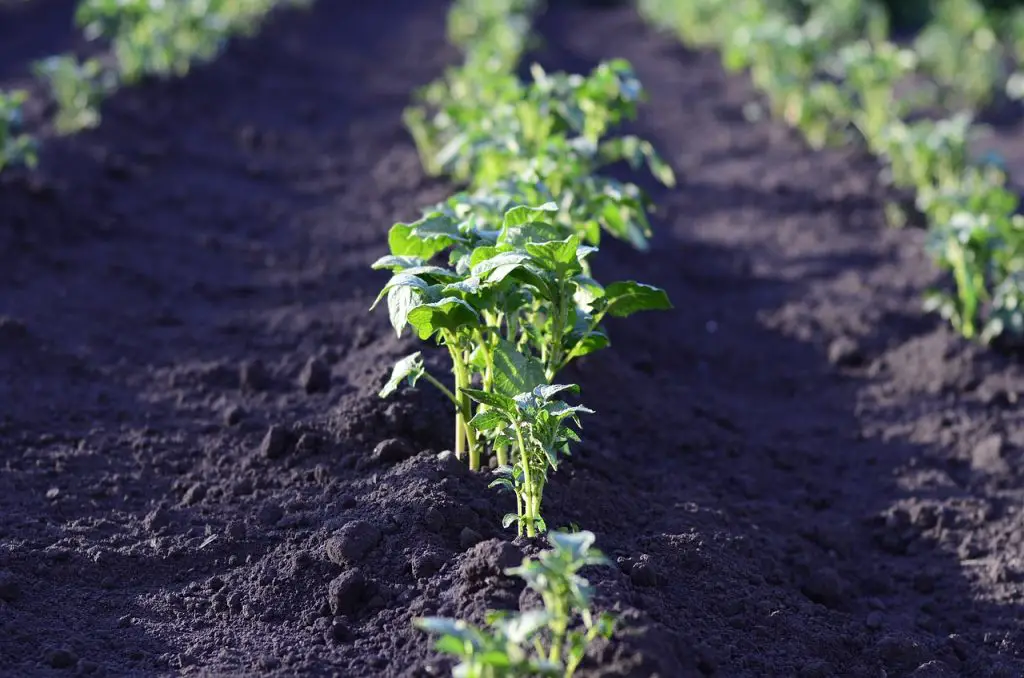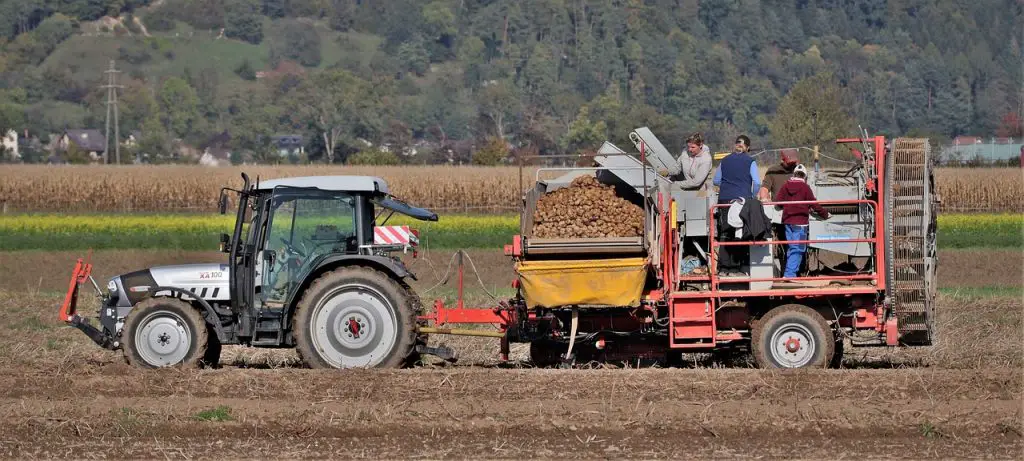If you’re wondering “when to plant potatoes in Prescott”, you’re not alone. Understanding the optimal growing season for this beloved tuber can make the difference between a bountiful harvest and a disappointing yield.
Prescott’s unique climate lends itself well to cultivating potatoes, but knowing when and how to plant them is key.

This article will dive deep into the specifics of potato planting in this region and provide practical tips to make your gardening experience fruitful.
Understanding Potatoes: From Tubers to Harvest
Potatoes are fascinating plants with a long history of cultivation. Originating in South America, these plants have made their way into gardens and farms worldwide due to their nutritional value and versatility.
There are numerous varieties of potatoes, each with unique growing requirements and characteristics. Some popular types include Russets, Yukon Gold, Red, and Fingerling potatoes. Each potato variety offers different flavors, textures, and cooking properties, contributing to the versatility of this crop.
In Prescott, the majority of gardeners and farmers tend to lean towards varieties that are hardy and adaptable to the local climate. With proper care and timing, growing potatoes can yield a generous harvest, which brings us to the critical question: when should potatoes be planted in Prescott?
Why Plant Potatoes in Prescott?
Prescott’s climate makes it a suitable place for growing potatoes. The area enjoys a fairly mild climate with distinct seasons, which is optimal for the growth of potato plants. In addition, Prescott’s fertile soil, which is high in organic matter, is perfect for nourishing potato plants and encouraging abundant growth.

Historically, potato cultivation has been a significant part of Prescott’s agricultural scene. The city’s unique combination of climate, soil, and sunlight conditions have made it an ideal location for this crop. Planting potatoes in Prescott is a way to participate in a long-standing tradition while also providing a nutritious food source for your household.
The Perfect Planting Period: Determining When to Plant Potatoes in Prescott
Knowing the perfect time to plant potatoes in Prescott requires an understanding of the local climate and the growing requirements of the potato plant. Generally, potatoes do best when planted in early spring, as they need cool ground to develop properly. In Prescott, this generally falls around March or April, when the risk of heavy frost has passed.
Temperature plays a critical role in potato growth. As a rule of thumb, potatoes should be planted when the soil temperature is around 45°F (7°C).
Soil thermometers can be used to measure this accurately. Bear in mind that these are general guidelines, and specific timing may vary depending on the variety of potato you are growing and current weather patterns.
Seeding Strategies: Proper Techniques for Planting Potatoes
Starting with high-quality potato seeds is essential for a successful harvest. Choose certified seed potatoes to avoid diseases and ensure a good yield. Before planting, most gardeners cut their seed potatoes into chunks, each with one or two “eyes” or buds. These pieces are then left to dry for a few days to form a protective skin over the cut areas.
Planting involves creating a furrow or hole in the soil, placing the seed potato piece in it, and then covering it with soil. Seed potatoes should be planted about 12 inches apart in rows that are 2-3 feet apart. The planting depth should be around 3-4 inches.
Soil Requirements for Successful Potato Growth
Potatoes thrive in well-drained, loamy soil that’s high in organic matter. They prefer a slightly acidic pH, ideally between 5.8 and 6.5. Before planting, it’s a good idea to test the soil in your garden or plot to ensure it meets these criteria. You can use a soil testing kit for this, which can be purchased from a local garden store or ordered online.
If your soil is lacking in nutrients or doesn’t have the right pH, amendments can be added to improve its quality. Compost or well-rotted manure can increase the organic matter content, while lime or sulfur can be used to adjust the pH. It’s also beneficial to rotate your crops to prevent soil exhaustion and disease build-up.
Prescott’s Unique Weather: How it Affects Potato Planting
Prescott’s weather is characterized by mild winters and warm summers, which can affect potato planting and growth. It’s important to plant potatoes early enough in the spring to ensure they have enough time to grow and mature before the hot summer temperatures set in.
If potatoes are still growing when temperatures get too high, they may stop producing tubers or the tubers may develop a bitter taste.
The local climate also influences how you manage your potato plants. For example, in dry periods, potatoes will require more frequent watering. On the other hand, during wetter spells, you may need to mound more soil around the base of your plants to prevent them from getting waterlogged.
Importance of Proper Irrigation for Potatoes
Irrigation is a critical aspect of potato care. Potatoes require consistent moisture, especially during tuber formation, which usually occurs 2-3 weeks after planting. At this stage, insufficient water can lead to lower yields and smaller potatoes.
While potatoes are tolerant of some dry conditions, they do not fare well under prolonged drought. In the arid climate of Prescott, gardeners might need to water their potato plants more frequently, especially during the hotter months. However, care should be taken not to overwater as this can lead to rot and other diseases.
Contending with Common Potato Pests and Diseases in Prescott
In Prescott, just like anywhere else, potato plants can be susceptible to various pests and diseases. The most common include Colorado potato beetles, aphids, and diseases like late blight and potato scab.
Organic methods to control these issues can include crop rotation, using disease-resistant potato varieties, and employing natural predators like ladybugs for pest control. More conventional approaches might involve the use of pesticides and fungicides, though these should be used judiciously to minimize their environmental impact.
For a more comprehensive list of potato pests and diseases in Prescott, consider referring to resources like the University of Arizona’s Cooperative Extension.
Monitoring Potato Growth and Development
Monitoring the growth of your potato plants can help you identify potential issues early and ensure a good yield. This involves regularly checking your plants for signs of pests or disease, as well as observing their overall growth and development.
potato plants include sprouting, flowering, and senescence (or dying back of the plant). Each stage has its own set of characteristics and requirements.
During the sprouting stage, keep the soil consistently moist and mound additional soil around the shoots as they grow to protect them and encourage the development of more tubers. When your potato plants start flowering, it’s a sign that tubers are starting to form.
At this point, ensure your potatoes are getting enough water, but be careful not to overwater. Finally, when the foliage begins to yellow and die back, it’s usually a sign that your potatoes are ready to harvest.
Harvesting Potatoes: Signs and Techniques

The timing for potato harvest in Prescott typically falls between late summer and early fall, depending on when you planted and the potato variety. One sign that potatoes are ready for harvest is when the plants’ foliage starts to yellow and die back. At this point, you should cut back on watering and let the soil dry out a bit.
To harvest, gently dig around the plants with a fork or a special potato harvester, taking care not to pierce the tubers. Once harvested, let the potatoes dry out in a cool, dark place for a few days to cure. This process helps to toughen up their skin and extends their storage life.
Post-Harvest Practices for Potatoes
Once you’ve harvested your potatoes, proper storage is essential to maintain their quality and extend their shelf life. Potatoes should be stored in a cool, dark, well-ventilated place. The ideal storage temperature is around 40-45°F (4-7°C). At these temperatures, potatoes can be stored for several months.
Additionally, try to sort through your potatoes and remove any that are damaged or diseased to prevent them from affecting the others. Regularly check your stored potatoes and remove any that are going soft or showing signs of rot.
Community Resources for Prescott Potato Growers
Growing potatoes in Prescott can be a community endeavor, with numerous resources available for local growers. Organizations such as the Yavapai County Master Gardeners offer a wealth of information and advice on local gardening.
Local gardening clubs and societies often host events and seminars that can provide useful tips for growing potatoes and other crops. Community garden programs can offer valuable hands-on experience and are a great way to connect with fellow garden enthusiasts.
Frequently Asked Questions
In this section, we will be delving into some of the most common inquiries and curiosities that surround our topic.
How long does it take for potatoes to grow in Prescott?
Depending on the variety, potatoes typically take between 70 to 120 days from planting to harvest.
What type of potatoes grow best in Prescott?
Varieties that do well in Prescott’s climate include Russets, Yukon Gold, and Red potatoes, among others.
How many potatoes can I expect from each plant?
On average, each potato plant can yield between 3-5 pounds of potatoes, but this can vary based on growing conditions.
How do I store potatoes for long periods in Prescott’s climate?
Store potatoes in a cool, dark, and well-ventilated place. Basements or root cellars are ideal if available.
What should I do if my potatoes show signs of disease or pest infestation?
Depending on the issue, you might need to use organic or chemical remedies. Consult local gardening resources or your county extension office for advice tailored to your specific situation.
Summary: Key Takeaways on Planting Potatoes in Prescott
In conclusion, planting potatoes in Prescott involves understanding the local climate, preparing the soil appropriately, planting at the right time, and providing proper care throughout the growing season.
Potatoes thrive in Prescott’s climate, but successful cultivation requires diligence and an understanding of the potato’s needs and life cycle.



Leave a Comment
You must be logged in to post a comment.